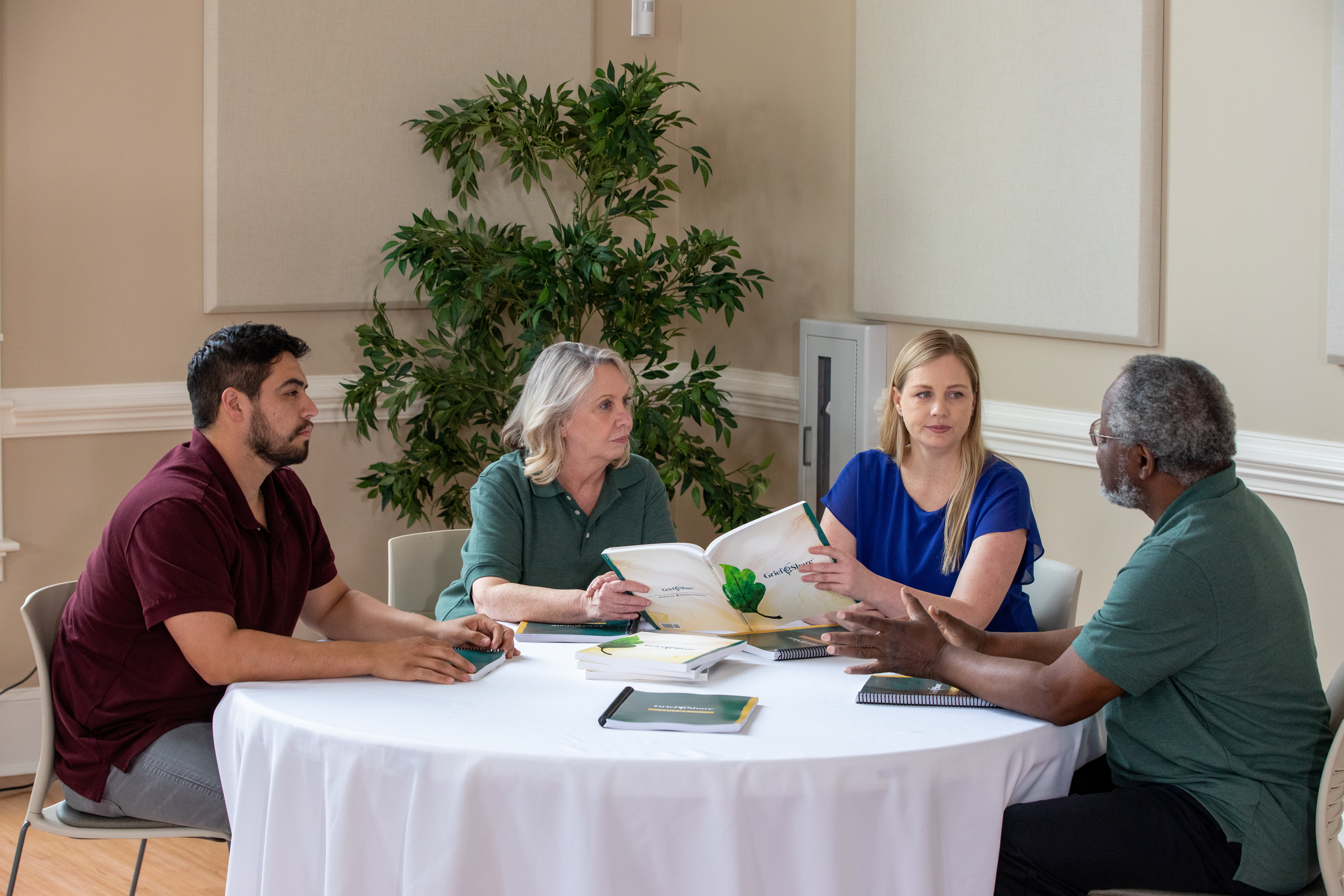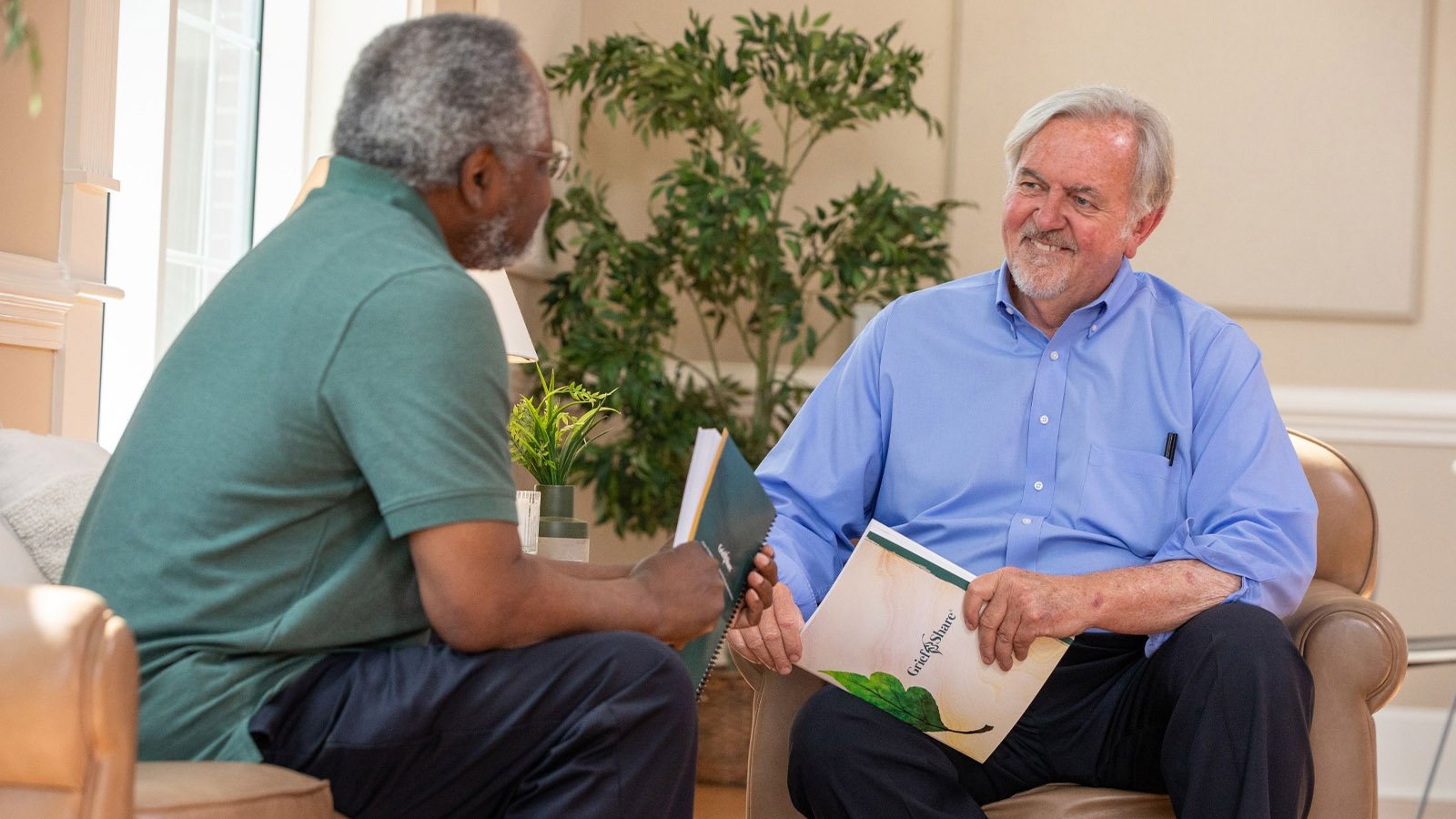Breaking Out into Smaller Groups Helps Discussion

Have you ever sat in a really big group and felt too intimidated to speak up? Or simply stayed quiet because more dominant personalities were taking the floor? The thought of opening up to a large group of people about the complex emotions of grief can be terrifying. This is why breaking out into smaller groups for your GriefShare discussion time can help both participants and leaders.
While the group as a whole provides a strong sense of community, small-group breakouts can foster even deeper connections and provide an intimate space for sharing and healing. Here’s how you can effectively use small-group breakouts in your GriefShare sessions.
Benefits of smaller groups
Before we jump into strategies for trying out smaller groups, let’s consider why it is important.
- Easier to open up: In a smaller setting, participants can feel less intimidated and more likely to share their thoughts and emotions.
- Deeper connection: Smaller groups create more personal environments, helping participants to build deeper connections.
- More support: Leaders can offer more specific and tailored support when they are talking to a smaller group.
5 pointers for breaking out
1. Consider number of people and group dynamics
Getting into smaller groups can be especially helpful in these situations:
- When the group is large
- When the topic is more sensitive for people in your group
- When some people aren’t having opportunity to speak
Try this tip! Be flexible. You can make adjustments depending on the group’s dynamics, the participants’ needs, and the number of people who show up.
2. Stay organized
During your meeting, when it’s time to break into groups, decide in advance how you can do this smoothly:
- Decide how you’ll assign groups: In choosing which people will go in what group, you could have a mix of quieter and more talkative members to keep your discussion active. You could group people together who have similar losses or other commonalities. You could also simply assign groups based on where people are sitting. For suggestions on how to plan a smooth transition and other ways to divide up the group, see Tips for Hosting a Large GriefShare Group.
- Have enough facilitators: Each group needs to have a leader with them. That way the leader can guide the discussion, make sure everyone has a chance to share, and keep the discussion on track. Not sure how many facilitators to plan? This article can help.
- Set clear expectations: Before you break out, explain to the participants why you are getting into smaller groups and that their group facilitator will have a list of questions pertaining to the video that they’ll be discussing. This will help your participants know what to expect and be more comfortable.
Try this tip! Be on the lookout for facilitators. As your group grows, you’ll want to be ready. Past participants and current participants who have healed can make great volunteers. These assessments can help you gauge if they are ready.
3. Create a safe and supportive environment
Your goal is to create a space where your participants feel safe to express their pain after losing a loved one. Many GriefShare groups have participants sign a Group Guidelines Agreement, based on the guidelines found in their participant guides.
Here are a few guidelines you could share:
- Keep it confidential: Remind participants that what is shared in the group stays in the group. Building trust is key when creating a safe place for vulnerability.
- Be respectful: Everyone has different backgrounds, situations, and grief experiences. Be respectful of the differences. The group should be a place where everyone feels heard and validated.
- Lead with gentleness: Facilitators should gently steer the conversation. Make sure everyone has a chance to speak, but without pressuring anyone to share more than they are comfortable with.
Try this tip! Before you break out, remind everyone of these principles to encourage a safe sharing environment.
4. Bring the group together again
After your small-group discussion, it is important to come back together for final reflection. This will encourage a sense of community within the larger group and allows participants to benefit from the insights of others. Here are some ideas for what to do as you end the session together:
- Invite each group to share: Ask each small group to share one or two key takeaways from their discussion time. Each group might bring something different to the table that can help the group as a whole.
- Ask for prayer requests: Provide an opportunity for people to share a prayer request with the whole group. (You might encourage people to share their request in two sentences or less, so others can have the chance to ask for prayer as well.)
Try this tip! Keep time in mind. You don’t want your small groups to feel rushed, but you also want to give your group time to come back together.
5. Adapt to online groups
Even if your group is online, you can still divide into small groups. Many virtual meeting platforms have a breakout room feature to help you easily create smaller groups. Make sure you do these things to help it go smoothly:
- Assign leaders to each breakout room: Just like you would in person, make sure there is a leader with each small group. The leader can keep the discussion on track and know when to join back with the larger group.
- Give clear instructions: Not everyone is tech savvy, so make sure you provide clear and easy-to-follow instructions. You can also let everyone know what the focus of the discussion will be.
 Safe spaces to share are safe spaces to heal
Safe spaces to share are safe spaces to heal
When leading your GriefShare group, small-group breakouts are key to creating a safe environment for participants to open up. It feels less intimidating and builds stronger connections within the group. By being thoughtful and organized as you break out, you will make your group even more supportive where everyone feels seen, heard, and valued on their grief journey.


